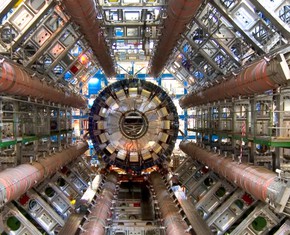The views expressed in our content reflect individual perspectives and do not represent the authoritative views of the Baha'i Faith.
 Looking out over the audience I saw that the room was filled, with every seat taken and a number of participants standing along the edges. It was a gathering sponsored by the White House office of Faith-based and Neighborhood Partnerships, attended by more than 150 representatives of widely diverse faith groups and congregations from across the country. Their common interest? Energy savings. A dollar saved through energy conservation is a dollar that can be redirected toward more worthwhile ends — of which the various faiths have many.
Looking out over the audience I saw that the room was filled, with every seat taken and a number of participants standing along the edges. It was a gathering sponsored by the White House office of Faith-based and Neighborhood Partnerships, attended by more than 150 representatives of widely diverse faith groups and congregations from across the country. Their common interest? Energy savings. A dollar saved through energy conservation is a dollar that can be redirected toward more worthwhile ends — of which the various faiths have many.
I was there, not only as an interested representative of the Baha’is of the United States, but also to lead off the day with a short reflection on the power of interfaith collaboration. I could see evidence of it in the room just by glancing around — colleagues from Christian, Jewish, Moslem, Hindu and Baha’i traditions were there, along with several representatives of important interfaith initiatives, such as Interfaith Power and Light, now represented in 39 states. So, perhaps my task was to “preach to the choir”!
Just a few years ago, this kind of gathering would not have taken place. The upsurge in interest in energy savings has certainly been driven by a slow economy and scarce resources, but also by a growing awareness of the reality of climate change and its moral implications. This latter issue gave the meeting an even greater sense of urgency for all in the room.
 The ravages of climate change, caused by the accumulation of greenhouse gas emissions, were brought into stark relief this summer for many here in the U.S. and around the world. The list of symptoms is all too familiar: record-breaking drought, flooding, wildfires, extreme weather events, melting of the Arctic icecap. If we didn’t feel these events directly we witnessed others facing these harsh realities. Such episodes are causing major disruptions to the lives and health of countless people and species around the globe.
The ravages of climate change, caused by the accumulation of greenhouse gas emissions, were brought into stark relief this summer for many here in the U.S. and around the world. The list of symptoms is all too familiar: record-breaking drought, flooding, wildfires, extreme weather events, melting of the Arctic icecap. If we didn’t feel these events directly we witnessed others facing these harsh realities. Such episodes are causing major disruptions to the lives and health of countless people and species around the globe.
So, even more than having an interest in energy conservation, those of us in the room were there with a common concern for justice. All faiths hold justice as a strong value. For me, a short passage from the Baha’i Writings comes to mind:
O Son of Spirit! The best beloved of all things in My sight is Justice; turn not away therefrom … Ponder this in thy heart; how it behoveth thee to be. Verily justice is My gift to thee and the sign of My loving-kindness. Set it then before thine eyes. (Baha’u’llah, Tablets of Baha’u’llah, p. 36)
By setting justice before our eyes, our energy conservation efforts take on an even greater purpose. The diverse faiths perceive climate change not only as a technical issue but also a moral one. The demand for justice on this issue is loud and clear.
When several faith groups made visits to Congress last spring under the auspices of Interfaith Moral Action on Climate, the power of diverse faiths speaking with one voice on this issue became clear for me. The diversity of our delegations felt good and right. Such unified action, when it reaches a critical mass will be a game changer. It will show the power of interfaith collaboration.
 Buildings in the U.S. account for 17 percent of U.S. greenhouse gas emissions. There are 370,000 worship facilities in the country, most rather large buildings with some unique characteristics. If all of these were to cut just 20 percent off their energy bills, according to EPA, they would save nearly $630 million and prevent more than 2.6 million tons of greenhouse gas emissions in the process. The Environmental Protection Agency’s EnergyStar for Congregations program offers an online tool for free, called “Portfolio Manager,” that congregations can use to track energy consumption in their places of worship and compare it to energy used in other similar facilities.
Buildings in the U.S. account for 17 percent of U.S. greenhouse gas emissions. There are 370,000 worship facilities in the country, most rather large buildings with some unique characteristics. If all of these were to cut just 20 percent off their energy bills, according to EPA, they would save nearly $630 million and prevent more than 2.6 million tons of greenhouse gas emissions in the process. The Environmental Protection Agency’s EnergyStar for Congregations program offers an online tool for free, called “Portfolio Manager,” that congregations can use to track energy consumption in their places of worship and compare it to energy used in other similar facilities.
We heard during the meeting about houses of worship that use Portfolio Manager cutting their energy use by 30 percent or more.
The EPA has issued a three-part “Call to Action” to congregations across the country wanting to conserve energy:
1) Start by benchmarking your facility’s energy use
2) Take steps that result in cutting your facility’s emissions by at least 20 percent
3) Strive to qualify as an “EnergyStar Congregation” by earning at least 75 points on a scale of 100, set out by EPA
To date, 28 congregations have qualified for the latter distinction, and they were celebrated at the White House event. Obviously, there’s plenty of room for more congregations to get on board.
If your congregation is among those working to reduce its energy consumption, bravo! If not, perhaps it is time to take action. By acting collectively we can do so much more — that’s the power of interfaith collaboration!
Tomorrow in Part II: The Day After Earth Day – Keeping Hope Alive
This article originally appeared in The Huffington Post on September 25, 2012.
















Comments
Sign in or create an account
Continue with Googleor